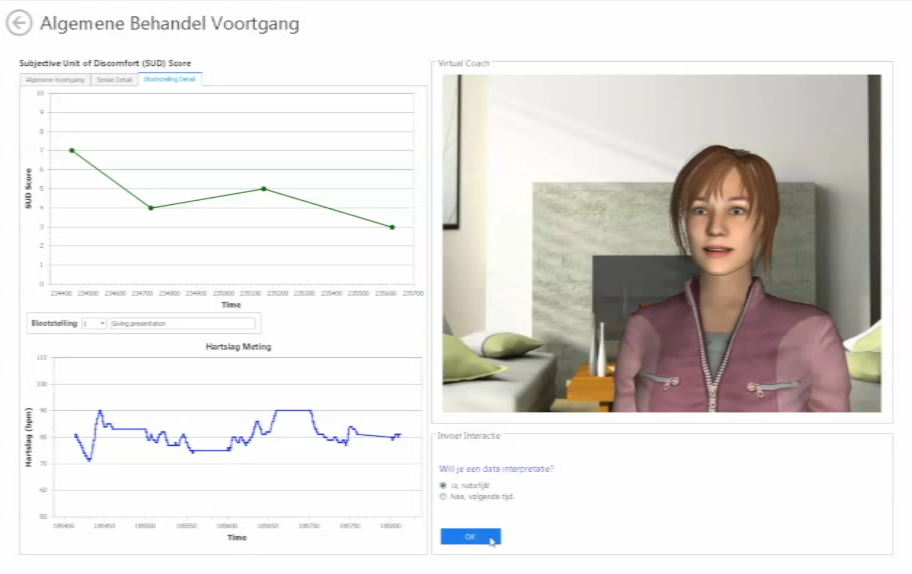Past projects
People with insomnia have problems with falling or staying asleep. This project examines various aspects of computerized sleep coaching, such as a mobile app, which includes a virtual eCoach.
Staff involved: Mark A. Neerincx, Willem-Paul Brinkman.

People with social phobia have a strong fear of social situations. This project focuses on the design and evaluation of a virtual reality exposure therapy system for the treatment of social phobia in the clinic and at home. Besides 19 free speech social scenarios for therapeutic purposes in virtual reality, patients are also supported by a virtual health agent that guides them through the therapy at home.
Staff involved: Willem-Paul Brinkman, Mark A. Neerincx.

For patients with chronic illness, self-management is the key to determine clinical outcome. This project introduces a home-based medical device for measuring the creatinine level, by providing patients with options for home-based blood pressure measurements, and by providing a website for feedback and eLearning.
Staff involved: Willem-Paul Brinkman, Mark A. Neerincx.

SHINE: Data Science for Environmental Monitoring in Urban Environments
The starting point of the SHINE research project is simple: better data leads to better understanding leads to better decisions. This holds for both individual citizens and government authorities. For this reason, SHINE develops ICT techniques to collect, process, and visualize data that concerns different aspects of urban life. Heavy rainfall is a good example of this. We collect data from physical sensors, e.g., weather stations that measure rainfall and wind direction. Likewise, data is collected by crowdsensing: citizens collecting and sharing weather data through social media or mobile apps. We combine data from social media (social media retrieval) with techniques to actively request people to contribute data (request-driven social sensing).
Staff involved: M. Birna van Riemsdijk (project leader), Catholijn M. Jonker.

The AffectButton is a measurement instrument for emotion feedback. It enables users to give feedback about their emotion, mood, and attitudes towards persons and products. The AffectButton is a standard button component available for Java and Python. You embed the AffectButton in any application that needs this kind of user feedback. When the user gives feedback, he/she moves with the mouse through the button. While moving the mouse, the emotional expressions on the face rendered in the AffectButton change according to the coordinates of the mouse in the button. The user thus selects a matching emotion by clicking the AffectButton when the face best matches the feeling, mood or attitude. The feedback you get from the button is standard button event with three values between -1 and 1, one for each of the affective (emotional) dimensions: positive-negative, active-passive, dominant-submissive. These values are the feedback, while the face is only there for the user to be able to select these values. To try out the AffectButton and to better understand how to interpret this feedback in more detail, see the publications on the AffectButton or the website.
Staff involved: Joost Broekens.

Developing a method to reduce the negative effects of emotions on decisions under high pressure, such as during crises and disasters, and hence increasing the quality of those decisions.
Staff involved: Willem-Paul Brinkman, Mark Neerincx.
